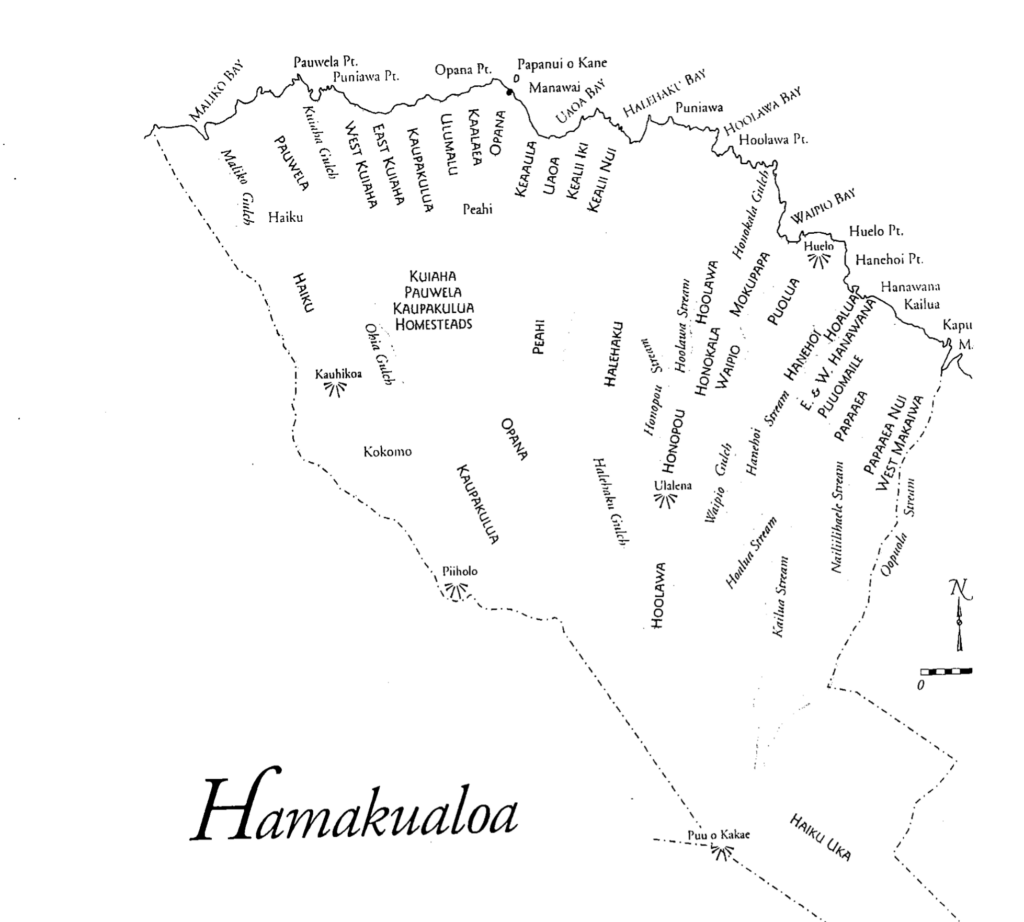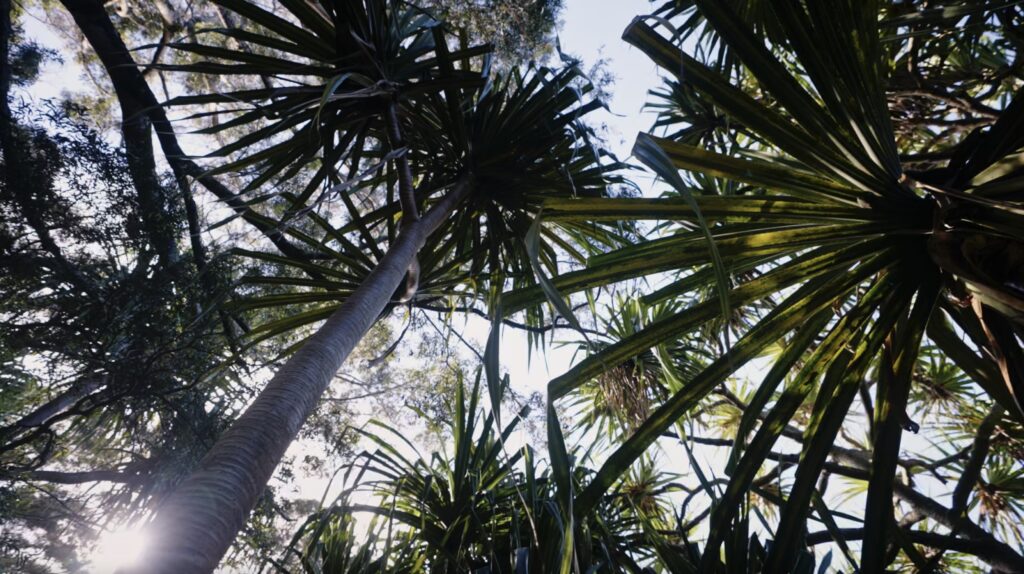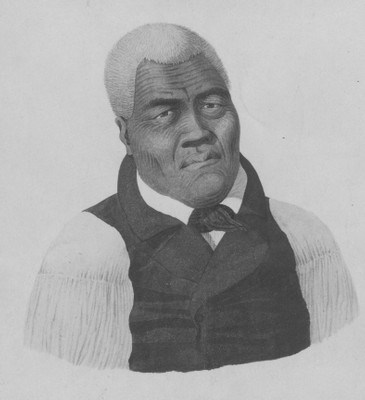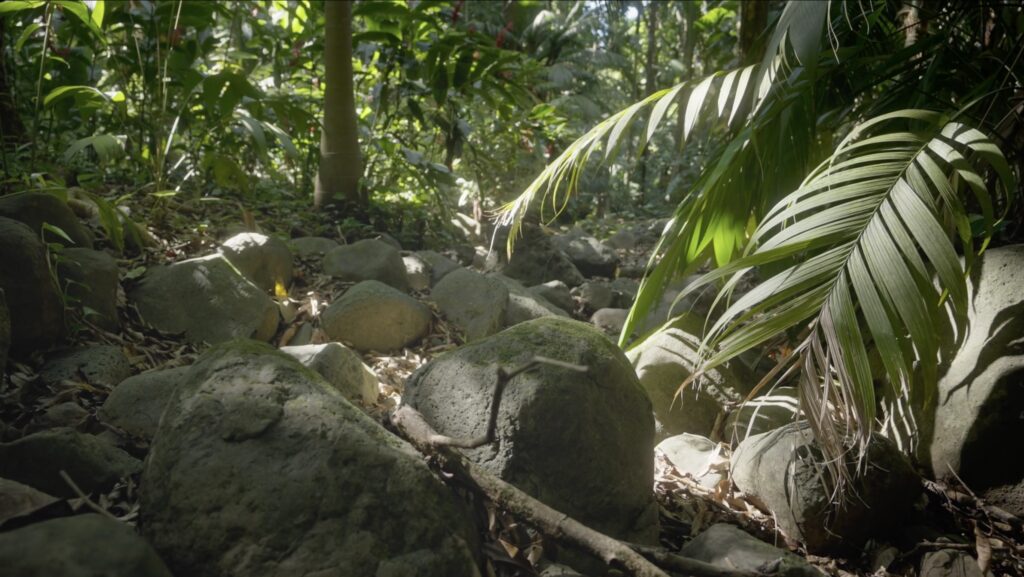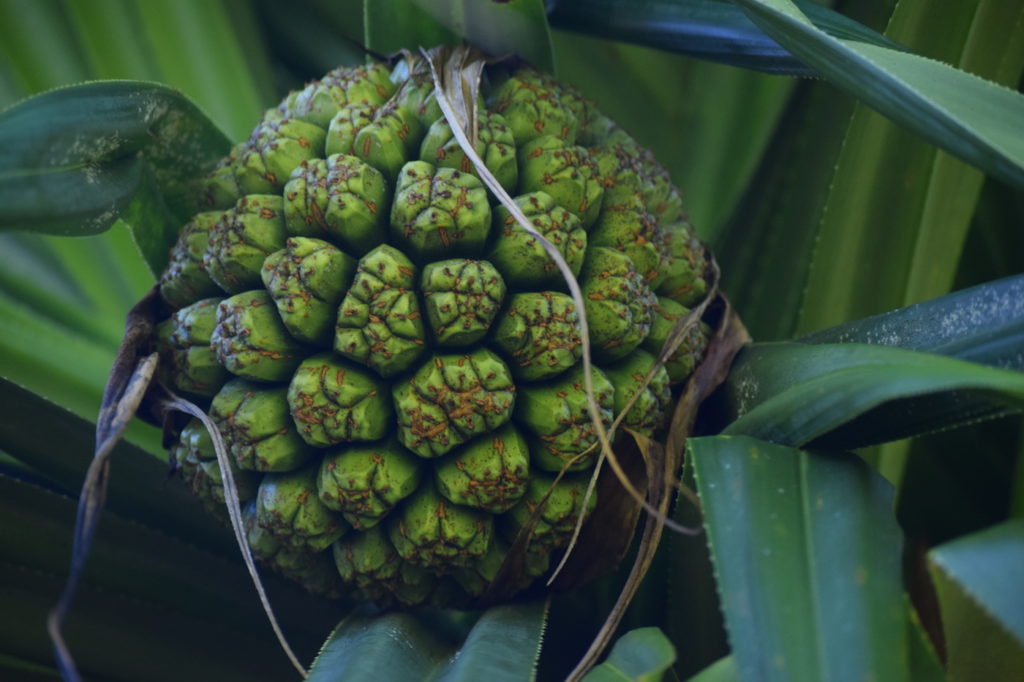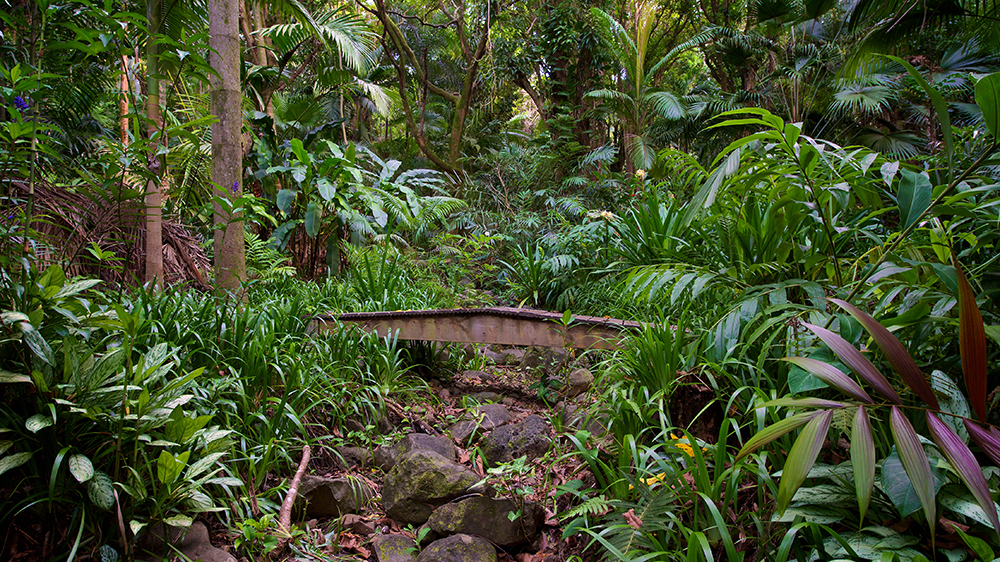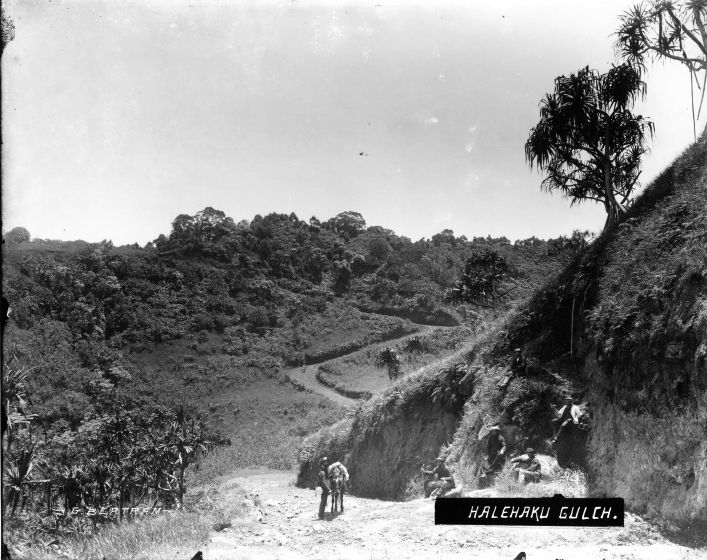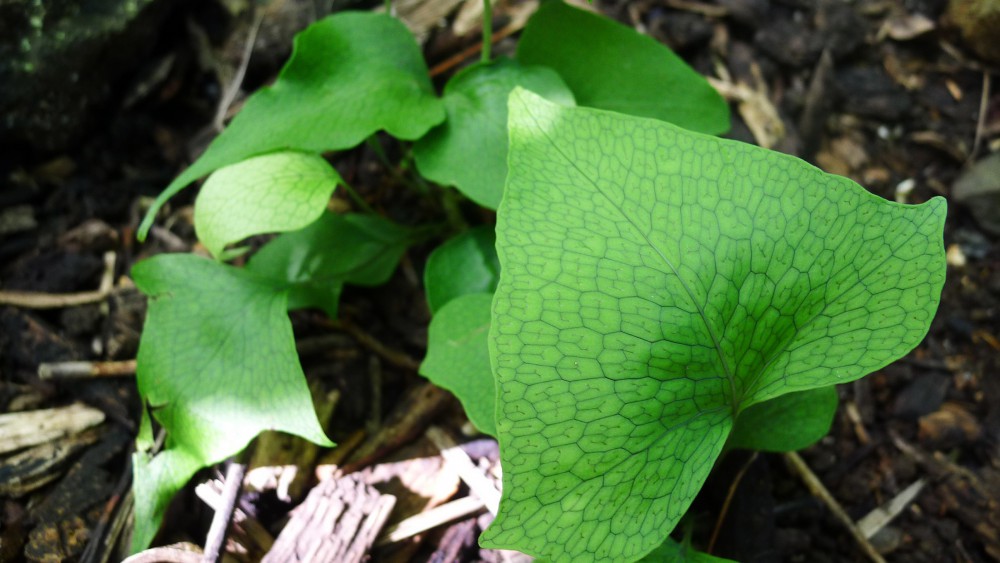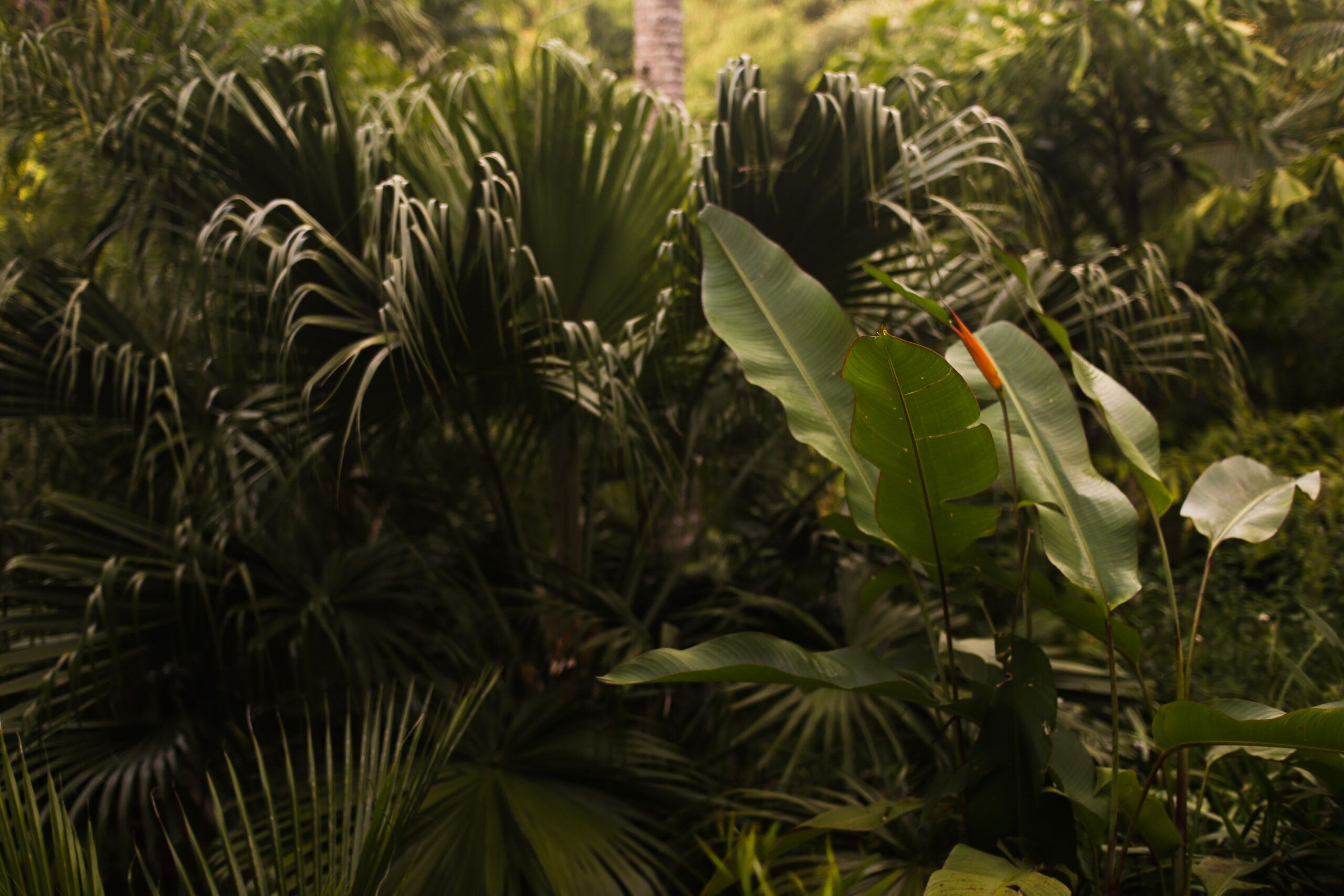
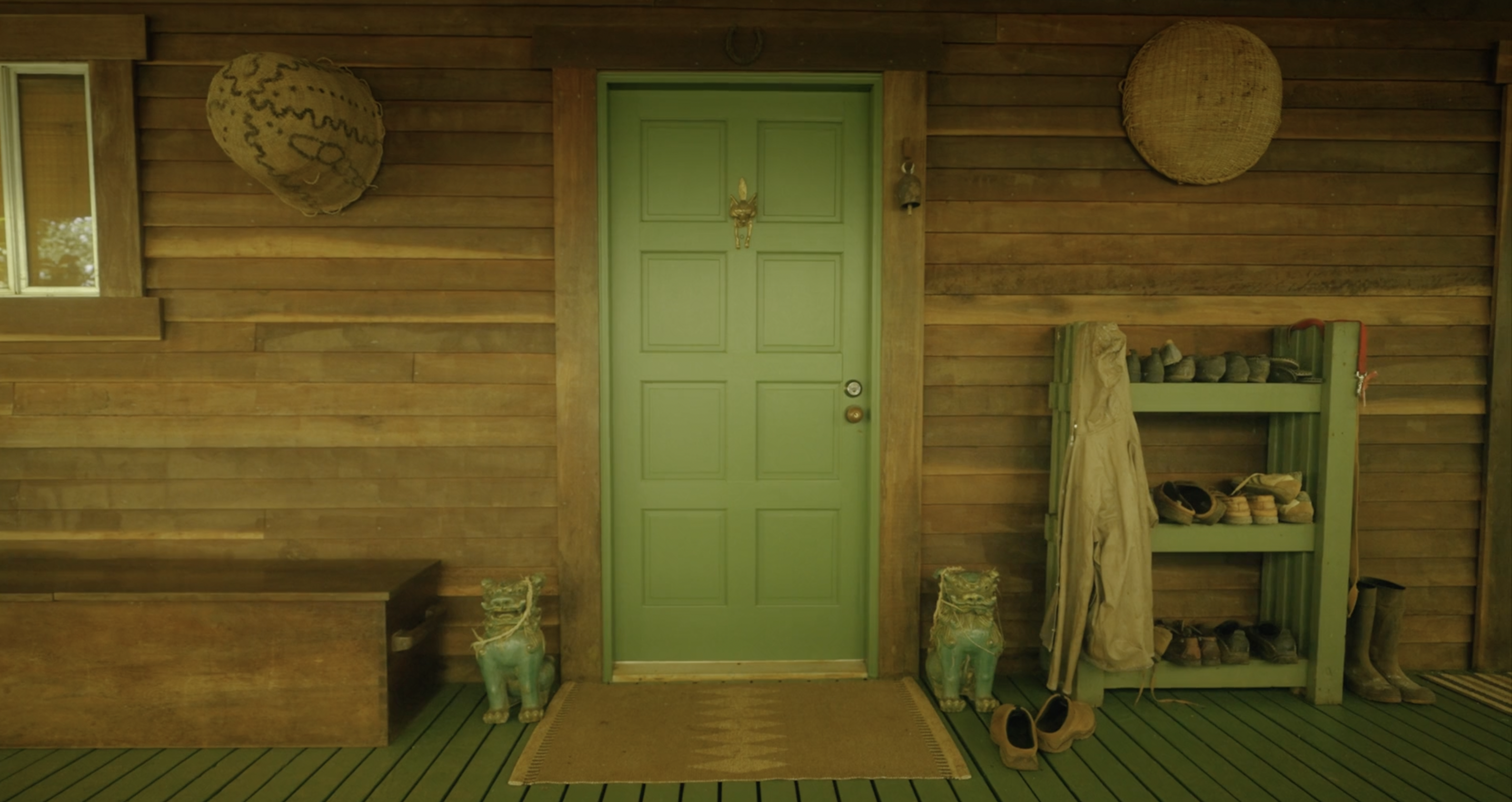
Place

In 1977, W.S. Merwin purchased a plot of former agricultural land in Peʻahi Valley on the north shore of Maui with the intention of revitalizing it. Over the span of over forty years, Merwin built an ecologically conscious home, planting more than 3,000 trees representing over 480 species of palms, including endemic and endangered varieties. He transformed a place once considered wasteland into a lush 18-acre tropical garden that is now considered one of the most important collections of palms in the world, and a living work of art. Dr. Bill Baker, a systemic biologist with the Royal Botanical Garden Kew and a recent scientist-in-residence at the Conservancy, described The Merwin Conservancy as “an unconventional garden of international significance, with exceptional conservation value.”
In 2010, William and Paula Merwin established The Merwin Conservancy, which will safeguard the land and home in perpetuity, and in 2014 the land became permanently protected by a Deed of Conservation Easement held by the Hawai‘i Land Trust.
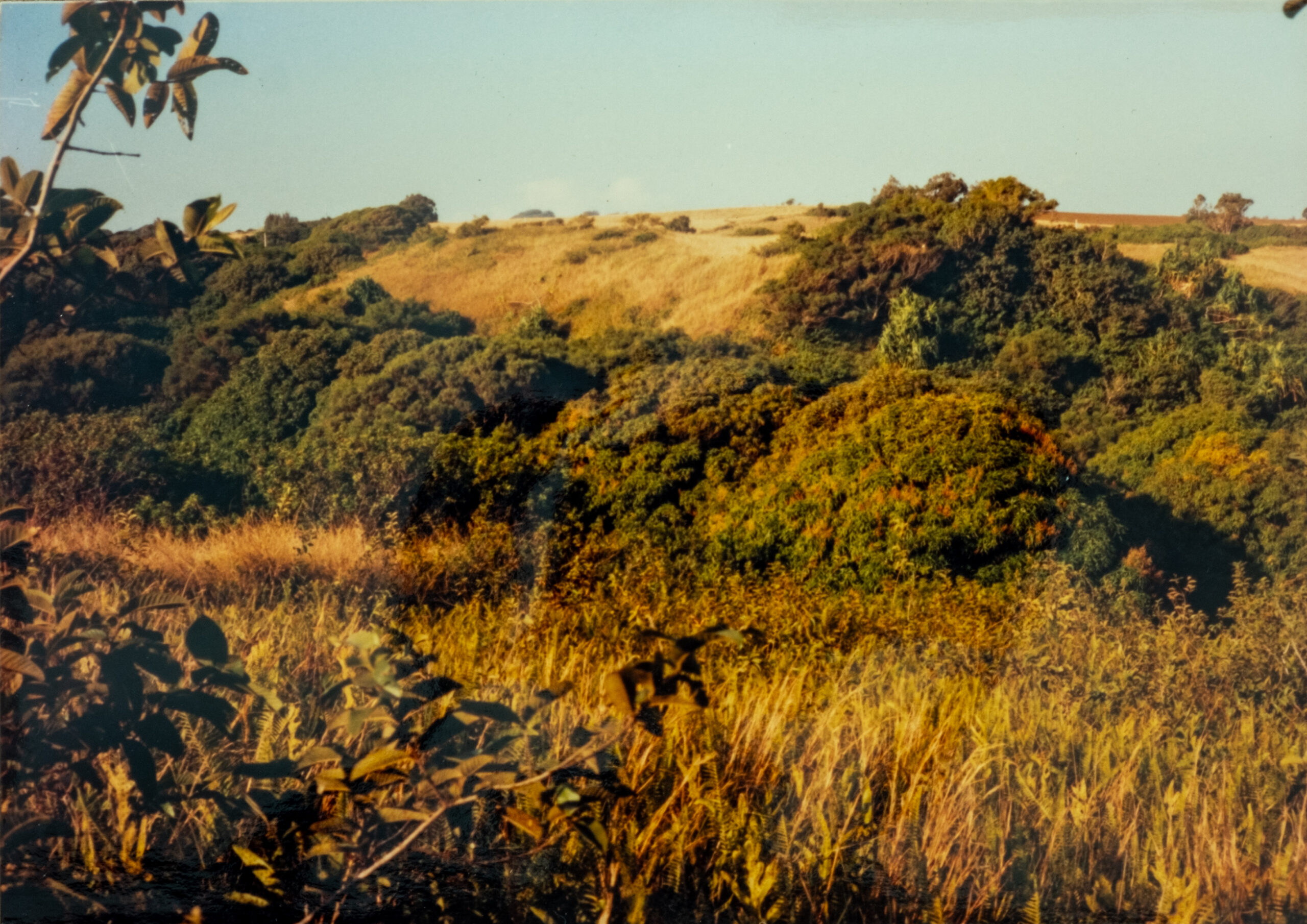
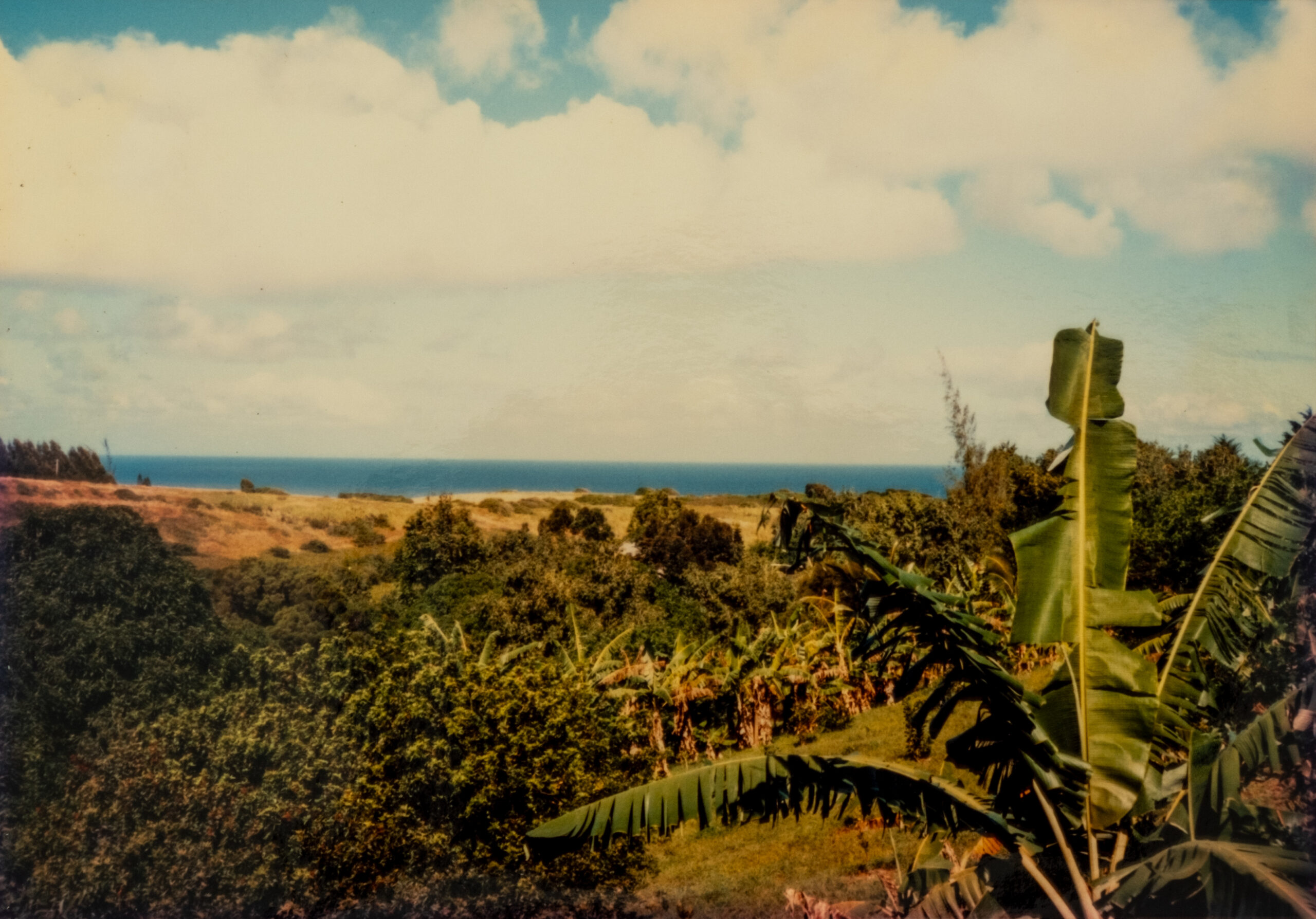
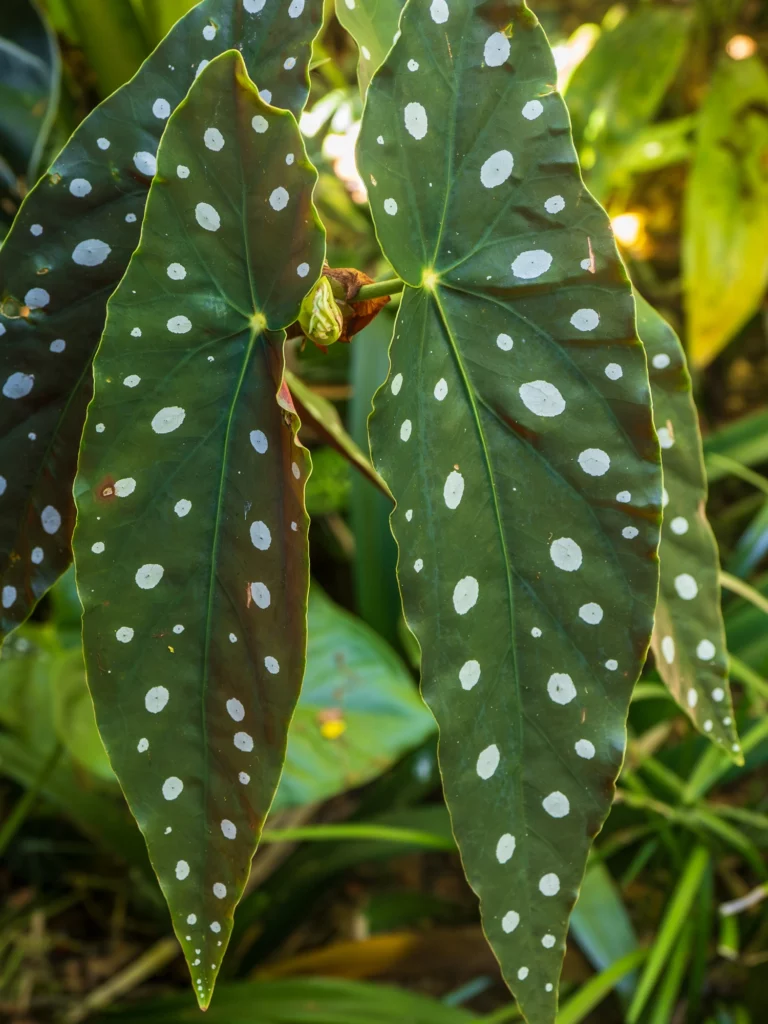
“The condition of the soil did not, in itself, daunt me. I had long dreamed of having a chance, one day, to try to restore a bit of the earth’s surface that had been abused by human ‘improvement.’ I loved the wind-swept ridge, empty of the sounds of machines, just as it was, with its tawny, dry grass waving in the wind of late summer.”
— W.S. Merwin, “The House and Garden: The Emergence of a Dream”
Merwin began to fulfill his dream the day he signed the escrow papers in 1977 and planted the first saplings along the road. As a result of the extractive agricultural practices that took place there in the late 19th and early 20th century, the soil was initially too stripped of nutrients to support the species of native trees and shrubs that once thrived on the land—including ‘ohias, koas, sandalwood, halas, and perhaps even native palms of the genus Pritchardia. Many native varieties Merwin attempted to grow on the land in those early days did not survive, with the exception of palms.
He continued to plant trees every day, nurturing the young palms he planted with the help of compost, manure, and buckets of water hand-carried from the sink until the plants could fend for themselves and thrive on rainwater alone.
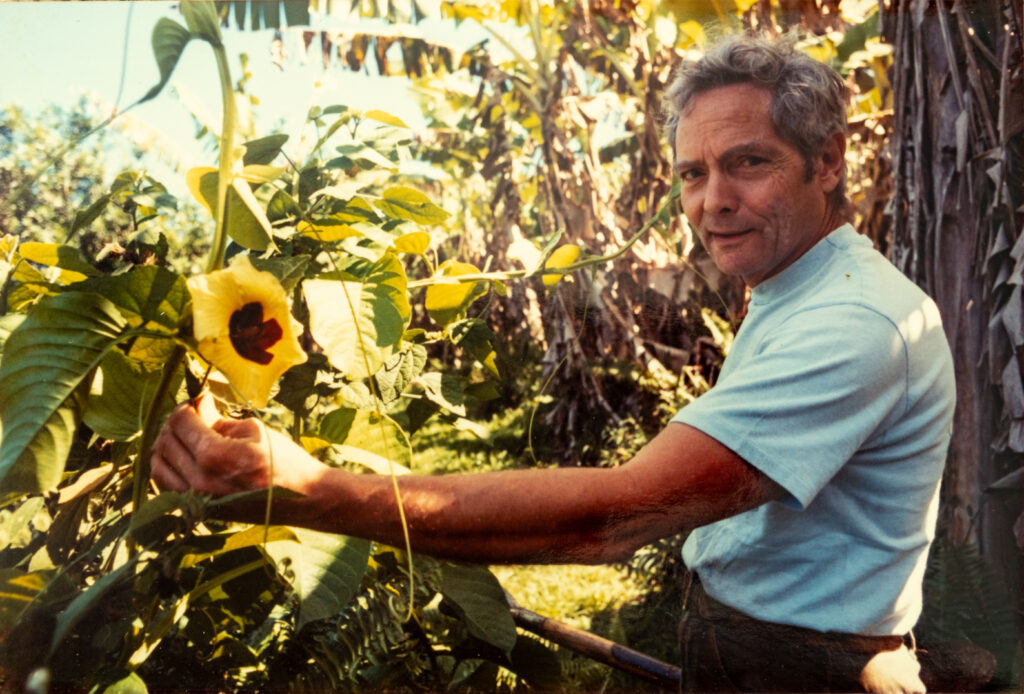

Peʻahi
The Merwin Conservancy is situated within the ahupua‘a (land division) known as Pe‘ahi within the greater moku (land district) of Hāmākua Loa. The garden is tucked between the slopes that rise up along either side of the now dry bed of the Pe‘ahi stream.
This stream valley and archaeological sites within it indicate that prior to the plantation era, traditional forms of agriculture were practiced here.

In 2021, The Conservancy commissioned an ethnohistorical study with Kepā and Onaona Maly of Kumupono Associates, locating our position in the long history of stewards who have come before us in Hāmākua Loa. Launched in 2022, a series of programs and Journal posts called Peʻahi Stories explored the layered history of this place.
A Walk in the Garden
Take a virtual walk through the grounds of W.S. and Paula Merwin’s garden–one of the largest and most extensive palm collections known to exist. Explore this 18-acre sanctuary, a testament to what is possible through care and thoughtful stewardship.
This production was made possible in part by funding from Hawaiʻi Council of the Humanities through the Sustaining the Humanities through the American Rescue Plan (SHARP) with funds from the National Endowment for the Humanities (NEH) and the federal American Rescue Plan (ARP) Act. Additional funding for this project was provided by Cooke Foundation. Video produced and directed by Sara Tekula at The Merwin Conservancy in collaboration with Pacific Story Tellers.
Listen to the Sounds of the Garden
,
,
(
,)

Palms
With over 2,740 individual palm trees, featuring more than 400 taxonomic species and 125 unique genera, with nearly 900 different horticultural varieties, W.S. Merwin’s garden is recognized as one of the largest and most extensive palm collections known to exist on earth.

Palm
The palm is in no hurry
to be different
and it grows slowly
it knows how to be a palm
when it was a seed it knew
how to be a palm seed
when it was a flower
it knew how to be
the flower of a palm
when it was a palm it grew
slowly
and without eyes
in a salt wind
—W.S. Merwin from Opening the Hand (Atheneum, 1983)
-
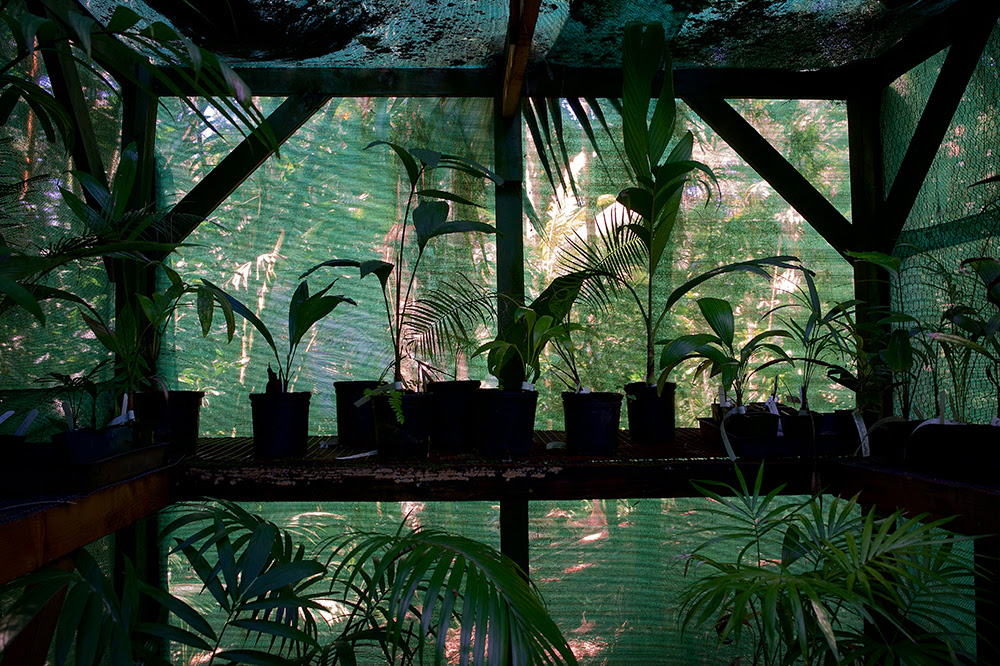
May 29, 2024 | Sonnet Coggins
Our Loulu Project
Read more: Our Loulu Project -
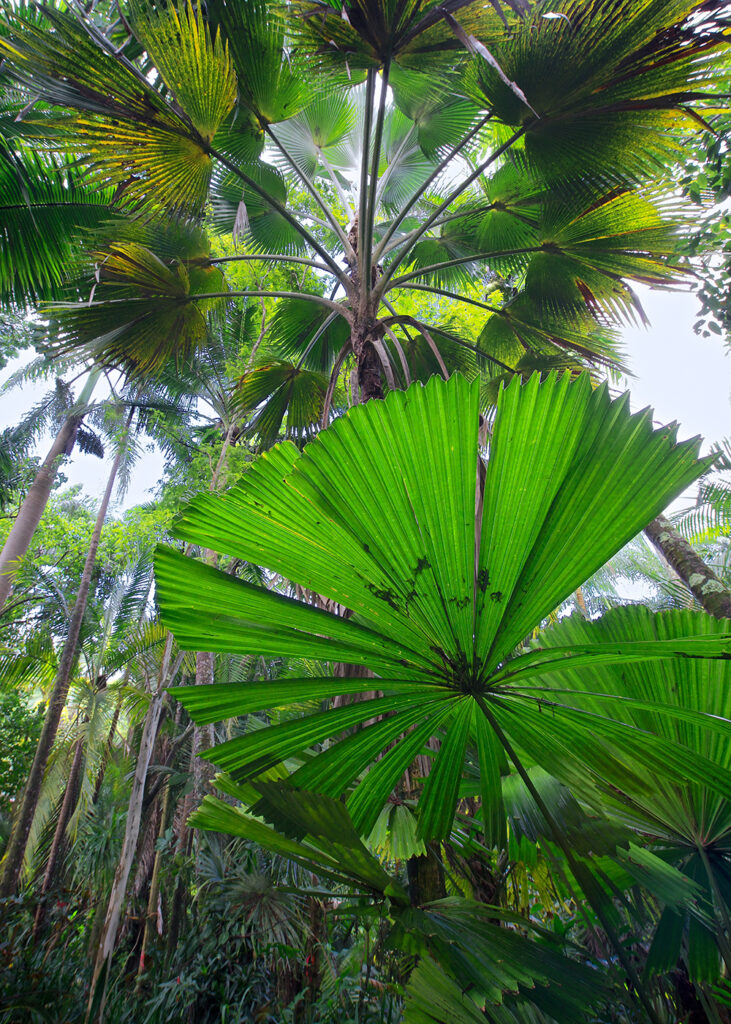
November 1, 2023 | Sonnet Coggins
A Thirty-four Year-Old Idea Takes Root At Last
Read more: A Thirty-four Year-Old Idea Takes Root At Last -

February 28, 2019
Metroxylon warburgii
Read more: Metroxylon warburgii -

January 23, 2019
Verscheffeltia splendida
Read more: Verscheffeltia splendida -

April 28, 2018
Arenga undulatifolia
Read more: Arenga undulatifolia -
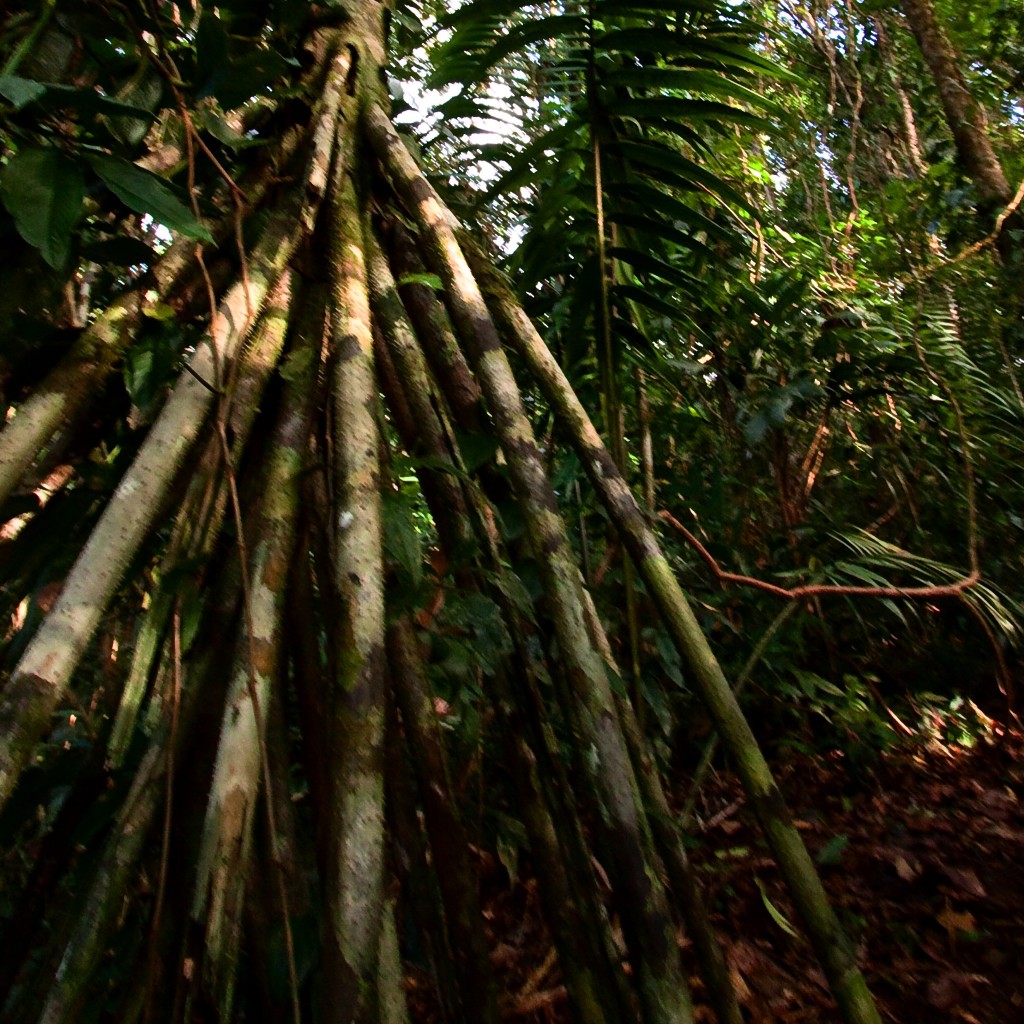
January 26, 2018
Socratea exorrhiza
Read more: Socratea exorrhiza -
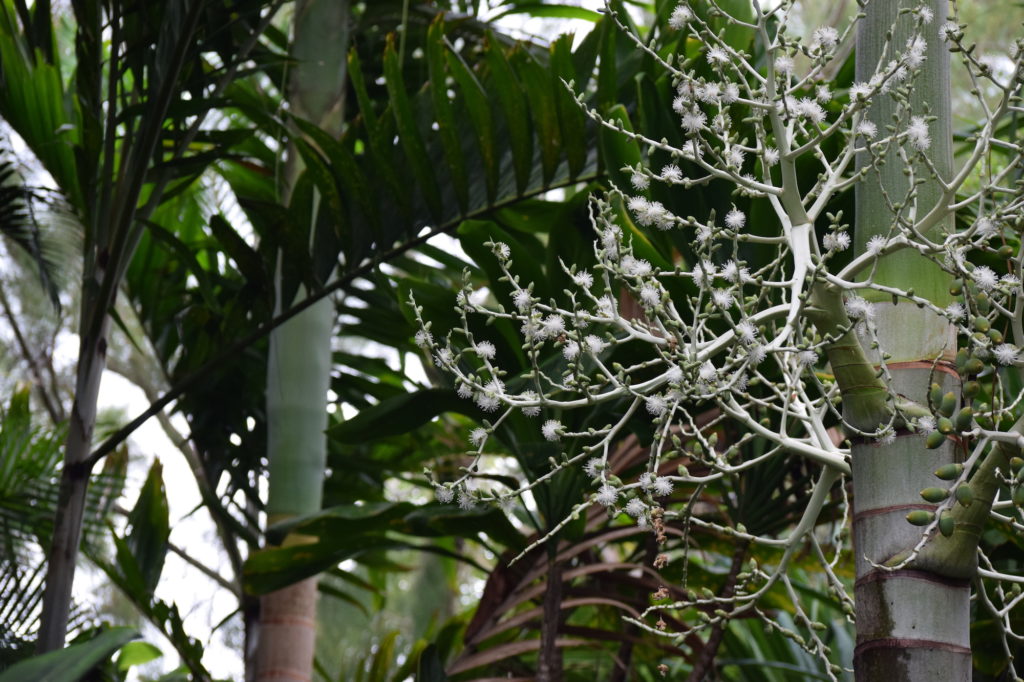
December 27, 2017
Vetchia arecina
Read more: Vetchia arecina -
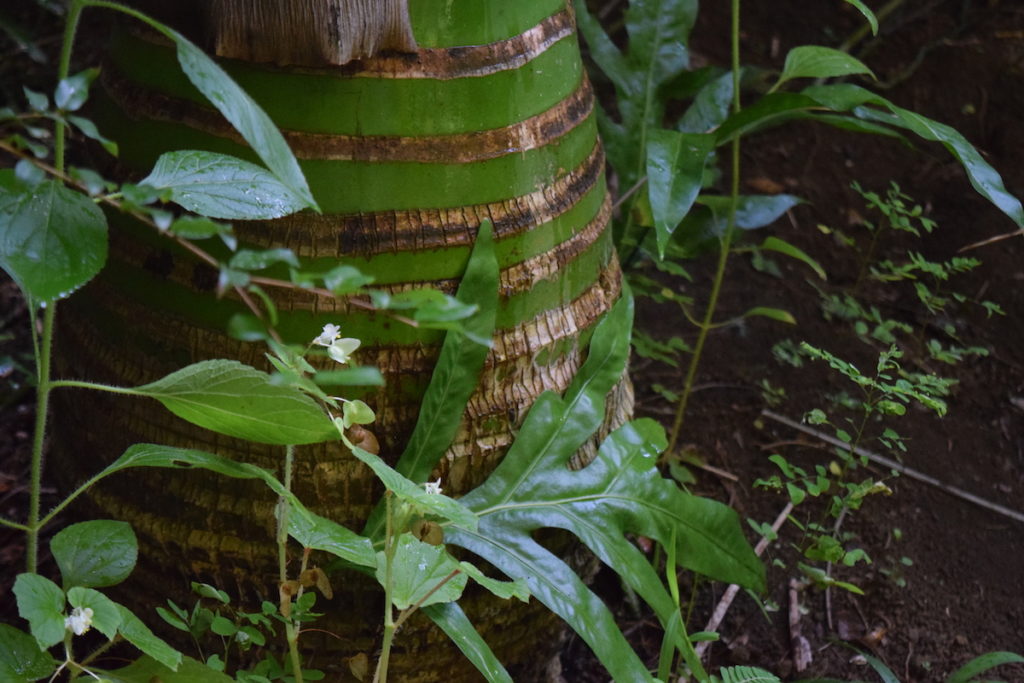
November 3, 2017
Carpoxylon macrospermum
Read more: Carpoxylon macrospermum -

October 21, 2017
Hydriastele microspadix
Read more: Hydriastele microspadix -
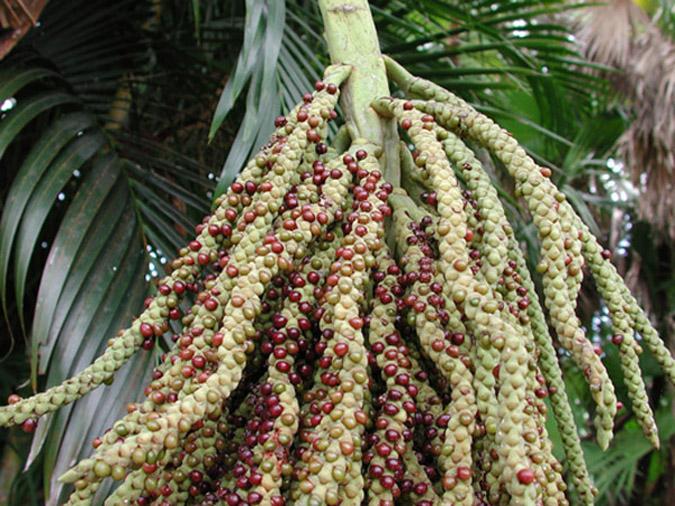
September 23, 2017
Calyptronoma rivalis
Read more: Calyptronoma rivalis -
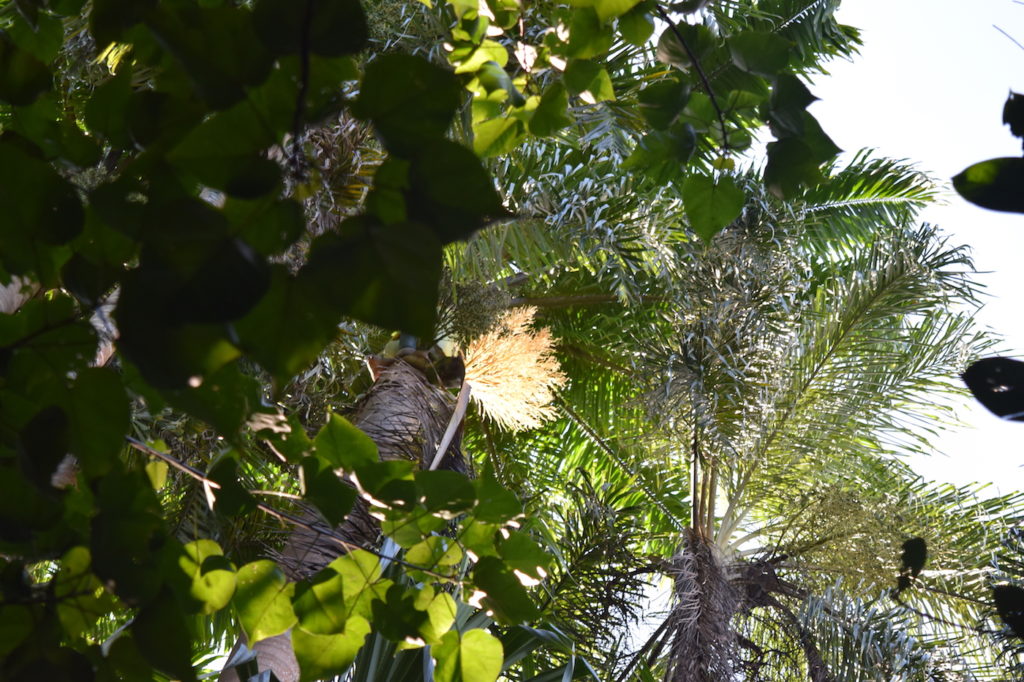
July 14, 2017
Roystonea oleracea
Read more: Roystonea oleracea -

July 1, 2016
Astrocaryum alatum
Read more: Astrocaryum alatum
The Garden Dojo
At the bottom of the Peʻahi Stream Valley, William and Paula built a garden dojo— a potting shed on one side, and a meditation space on the other. This video was shot entirely in and around a small room that the poet W.S. Merwin built for meditation.
This edit of Threshold is a meditative video created by artist duo Susannah Sayler and Edward Morris (Sayler / Morris and The Canary Project), in collaboration with The Merwin Conservancy.
Threshold was originally part of a site-specific installation in collaboration with Ian Boyden titled Palm: All Awake in the Darkness that was commissioned by American Writers Museum in Chicago with support from the Poetry Foundation.

House & Objects
Every aspect of the home and garden reflects the Merwins’ ideas about nature and art. The property is as close to self-sustaining as the Merwins could make it. For 25 years, electricity has come from solar energy. The shade of the tree canopy keeps the house naturally cool. The Merwins survived on rainwater, which is held in cisterns around the property— pumped by gravity and filtered by charcoal, sand and coral for use in the home.While preparing the site of the house, no heavy machinery was used in order to disturb the land as little as possible.


Today the Merwins’ home is the site of our residency program. It houses an extensive and varied collection, which includes the Merwins’ letters, books, sacred objects, gardening equipment, art, journals, and more.

